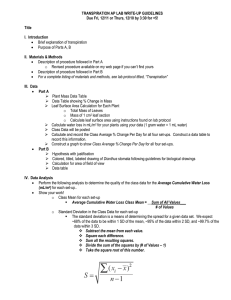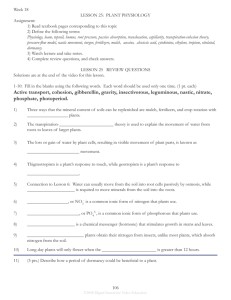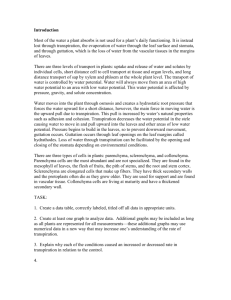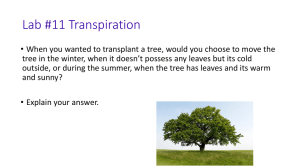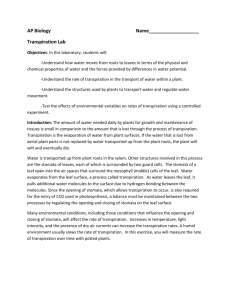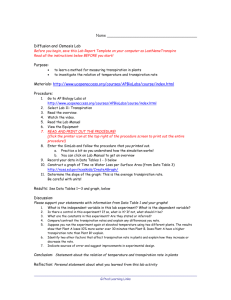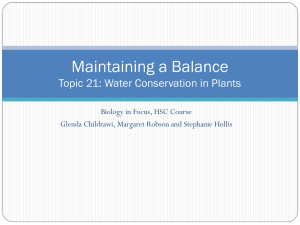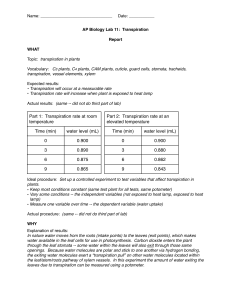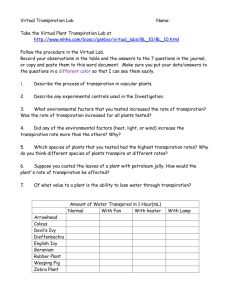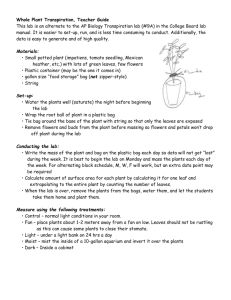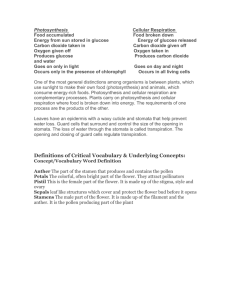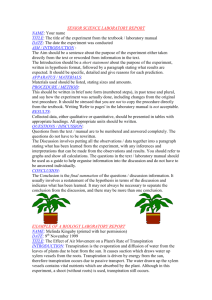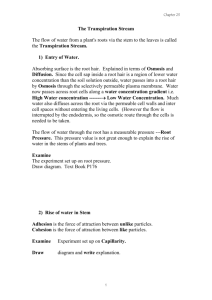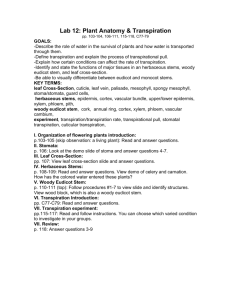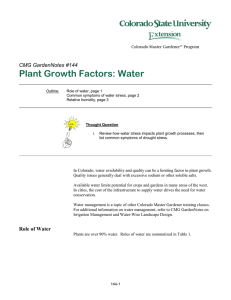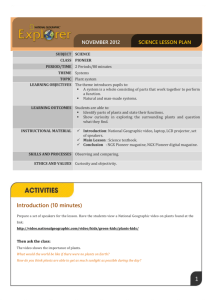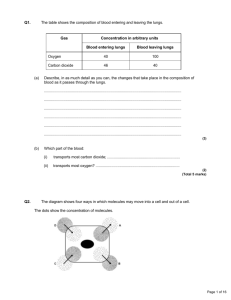Introduction, Results, and Discussion
advertisement
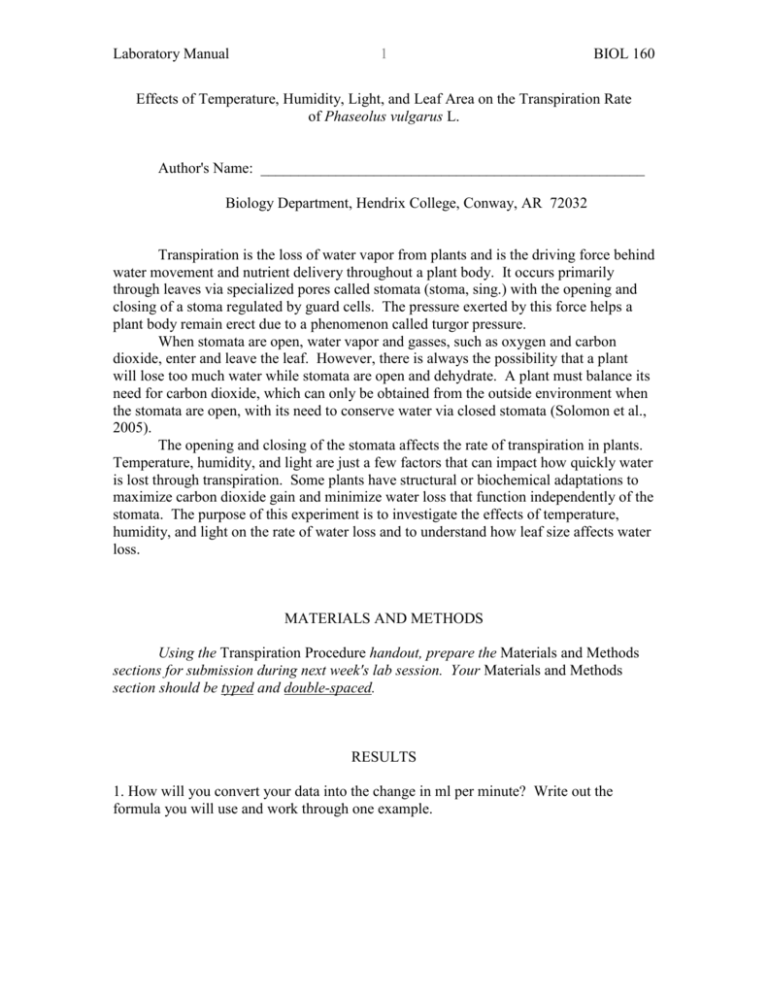
Laboratory Manual 1 BIOL 160 Effects of Temperature, Humidity, Light, and Leaf Area on the Transpiration Rate of Phaseolus vulgarus L. Author's Name: ___________________________________________________ Biology Department, Hendrix College, Conway, AR 72032 Transpiration is the loss of water vapor from plants and is the driving force behind water movement and nutrient delivery throughout a plant body. It occurs primarily through leaves via specialized pores called stomata (stoma, sing.) with the opening and closing of a stoma regulated by guard cells. The pressure exerted by this force helps a plant body remain erect due to a phenomenon called turgor pressure. When stomata are open, water vapor and gasses, such as oxygen and carbon dioxide, enter and leave the leaf. However, there is always the possibility that a plant will lose too much water while stomata are open and dehydrate. A plant must balance its need for carbon dioxide, which can only be obtained from the outside environment when the stomata are open, with its need to conserve water via closed stomata (Solomon et al., 2005). The opening and closing of the stomata affects the rate of transpiration in plants. Temperature, humidity, and light are just a few factors that can impact how quickly water is lost through transpiration. Some plants have structural or biochemical adaptations to maximize carbon dioxide gain and minimize water loss that function independently of the stomata. The purpose of this experiment is to investigate the effects of temperature, humidity, and light on the rate of water loss and to understand how leaf size affects water loss. MATERIALS AND METHODS Using the Transpiration Procedure handout, prepare the Materials and Methods sections for submission during next week's lab session. Your Materials and Methods section should be typed and double-spaced. RESULTS 1. How will you convert your data into the change in ml per minute? Write out the formula you will use and work through one example. Laboratory Manual 2 BIOL 160 2. Calculate a mean change in ml per minute for your plant. 3. How will you compare your results with those of other groups? Think about the leaf surface area measurements that you recorded. Write out the formula you will use and work through one example. 4. Another group investigated the effects of the variable that you tested. How can you combine your data sets? Laboratory Manual 3 BIOL 160 5. How will you compare the results for each of the variables tested in this experiment? DISCUSSION 1. What are the factors that will affect transpiration rate of the plants? Include both plant characteristics and environmental conditions. Will each of these factors increase or decrease the transpiration rate of the plant? 3. How will leaf area affect the transpiration rate of the plant? Laboratory Manual 4 BIOL 160 4. If two plants have the same leaf surface area, but one plant has only a few large leaves and the other has many small leaves, which will have the faster transpiration rate? LITERATURE CITED RIDENOUR, N. 1996. Laboratory Manual for AP Biology. Science Department, Ithaca High School, Ithaca, New York, USA. SOLOMON, E. P., L. R. BERG, AND D. W. MARTIN. 2005. Biology, 7th Edition. Thomson Brooks/Cole, Belmont, California, USA.

